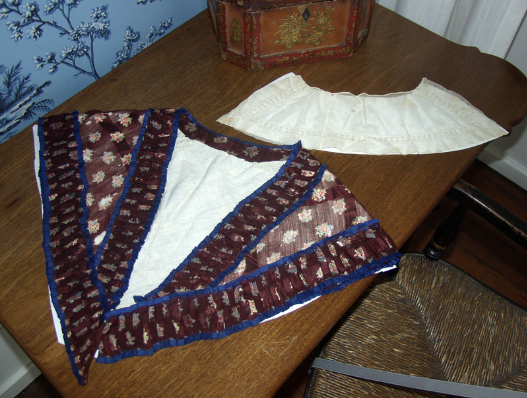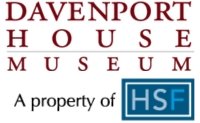Anne
Seamstress & Domestic Servant
Mary
Seamstress & Domestic Servant
-
Born: ca. 1790
Died: unknown
Family Members: Anne (daughter) (b ca 1814-1816), Possible children or grandchildren: [Mary (b. 1838), Alvira[1] (b. 1843), Madeline (b. 1846), Lizzy (b. 1853); Other possible grandchildren: Monday (b. 1840), Morris Walcott (b. 1829), Charley (b. 1850), Jane (b. 1843), Angie Welcher/Davenport (b. 1830), and Rennah (b. 1829), may be children or grandchildren. Deeping (b. 1795) may have been her spouse and father to her children.]Mary was born in Savannah around 1790. Benjamin Tippin owned Mary from the time of her birth. He was a carpenter who would eventually sell Mary when she was 9 years old, most likely due to financial hardship. Mary’s daughter, Anne, was born in 1815 when Mary was 25 years old. At the time of Anne’s birth, Mary was owned by George and Charlotte Atkinson, who were neighbors to the Davenports. They lived one square over in Greene Ward. Similar to the experience of her fellow bond people, Mary and Anne’s lives were impacted by the death of their owner. At the time of George Atkinson’s death in 1818 his estate was sold, including Mary and her young daughter Anne (age four). Isaiah Davenport purchased Mary and Anne at this sale. Records indicate that both mother and daughter would remain with the Davenports until 1860. After that, additional records of Anne and Mary have yet to be found.
Shortly before the death of Isaiah Davenport, Mary and her daughter were sold to Susannah Clark, Sarah Davenport’s mother. Susannah lived down the street. This prevented Mary and Anne from being subjected to public auction in 1828 as part of the settlement of Isaiah’s estate. When they were sold to Susannah Clark, a man named Deeping was sold with them. There is no deed of sale for Deeping by which to trace his origins, but he was very close in age to Mary, born ca. 1795. Because Mary, Anne, and Deeping were sold together, this may be an indication that Deeping and Mary became spouses or partners sometime between 1819 and 1825. When Susannah died in 1829, Mary and Anne rejoined Sarah Davenport’s household.
Mary, listed as “a certain yellow woman and her child age 4” sold for $800 according to a deed record of 1829. This could indicate that Mary’s father might have been white. The fathers were not documented and the relationships were often not consensual. The lived experience of enslavement was fraught with the horrors of not being in control of one’s life and family. Despite these obstacles, love was something all the enslaved sought after and many found or risked everything to return to loved ones.
Later deed records in which Sarah Davenport put up her slaves as collateral for loans indicate that at least ten enslaved children were born into the Davenport household. By comparing these to census records, several of these children can be identified as the grandchildren and perhaps late-in-life children of Mary. Rennah (b. 1829) and Auger (b. 1830) would have been born when Mary was about 40 years old and when her daughter, Anne was 16 years old. This makes it difficult to know for sure whether Rennah and/or Auger were the children of Mary or Anne. Mary (b.1838), Alvira (b. 1843), Madeline (b.1846), and Lizzy (b. 1853) are also identified in deed records. Born when Mary was 48 years old, it's possible that young Mary was her daughter. Alvira, Madeline and Lizzy are most certainly Mary’s grandchildren.
Mary and her daughter remained with Sarah Davenport the entirety of their lives, and as a result lived at various locations throughout Savannah. Ship manifest records also indicate that Mary made several trips to New York City in 1823, 1839, and 1853. During her time in Savannah, Mary would have built up an extensive network of friends and contacts in both the free and enslaved community and left behind an extensive geographic footprint.
Mary’s lived experiences illustrate the uncertainties faced by enslaved individuals in their daily lives as a result of the ever-looming prospect of sale to another owner. The death or financial hardship of a slave owner could mean the abrupt uprooting of an enslaved individual’s life, and the painful separation from family. Mary was not subjected to the public auction of 1828 as part of the settlement of Isaiah’s estate. As a young mother in 1819, however, she must have been fearful of the very real prospect of being separated from her four year old daughter during the public auction of George Atkinson’s estate. Mary spent some 70 or more years living in Savannah, and was never separated from her daughter, Anne. The possibility of being used as collateral for Sarah Davenport’s personal loans meant that the fates of Mary’s daughter and her grandchildren were perpetually in a precarious state.
-
Born: ca. 1814-1816, Greene Ward, Savannah
Died: sometime after 1860; lived to at least the age of 45
Family Members: Mary (mother); possible children: [Mary (b. 1838), Alvira (b. 1843), Madeline (b. 1846), Lizzy (b. 1853); other possible children: Monday (b. 1840), Morris Walcott (b. 1829), Charley (b. 1850), Jane (b. 1843). Angie Welcher/Davenport (b. 1830), and Rennah (b. 1829), may be children or siblings. Deeping (b. 1795) may have been Anne’s father.
Take a Journey to Find Our Artifacts!





